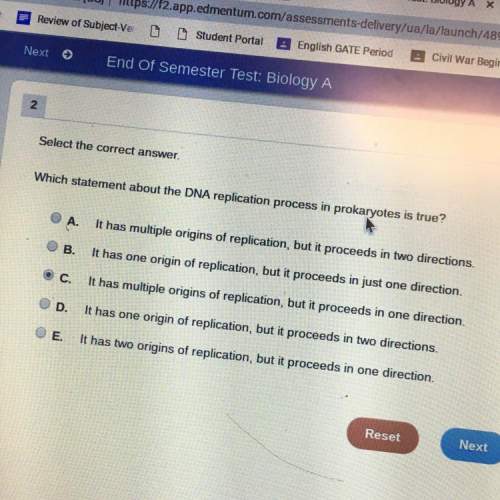
Biology, 25.03.2020 17:05 dylalove4963
(1744-1829) was an important French naturalist. He was one of the first scientists to propose that species change over time. idea of the inheritance of acquired characteristics. Like him, Darwin assumed that species can change over time. The fossils he found helped convince him of that.
I. An organism recognizes the need for a change.
II. An organism will react to the recognition of the need for a change.
III. By use or disuse and organism modifies its structure to satisfy the recognition of need for a change.
IV. Characteristics acquired as a result are passed on

Answers: 3


Another question on Biology

Biology, 21.06.2019 20:20
2. what process do mrna and trna work together to complete? (3 points)
Answers: 3

Biology, 22.06.2019 07:50
What is a limitation of using a chemical formula, such as c6h1206, to represent a compound? the chemical formula does not show the types of elements that make up the compound. the chemical formula does not show how the atoms are connected to one another the chemical formula does not show the number of atoms of each element in a molecule. the chemical formula does not show the chemical symbols of the elements in the compound
Answers: 1

Biology, 22.06.2019 19:00
Why does controlling transcription affect prokaryotic gene expression?
Answers: 3

Biology, 22.06.2019 19:20
What is the relative placement of the moon, earth and sun during a lunar eclipse? the sun, earth and moon are aligned with the earth in the middle and the moon furthest away from the sun. the moon and sun are aligned with the earth at right a right angle to the moon. the sun, earth and moon are aligned with the moon in the center and the earth furthest away from the sun. the earth and sun are aligned with the moon is at a right angle to earth. 2. choose the best explanation of a partial solar eclipse. during a new moon phase there is usually a partial but not total eclipse. the earth only partially covers the sun during the eclipse. the moon only partially covers the sun during the eclipse.the moon only partially covers the sun during the eclipse. the moon's phase is full and blocks out most but not all of the sun. 3. what are conditions necessary for a total solar eclipse? moon in perigee orbit, earth a direct line between sun and moon, moon in full moon phase moon in perigee orbit; moon moves a direct line between sun and earth; moon in full moon phase moon in perigee orbit; moon moves a direct line between sun and earth; moon in new moon phase moon in apogee orbit, moon moves a direct line between sun and earth; moon in new moon phase 4. what causes a partial lunar eclipse? only the penumbra of the earth passes across the moon creating a circular shadow. the earth's umbra fits inside the moon creating an illuminated ring known as a annular eclipse. a partial eclipse causes the moon to turn reddish from the refraction of the sun's ray through the earth atmosphere. the earth's umbra only cover a part of the moon causing a circular shadow to pass across it.
Answers: 1
You know the right answer?
(1744-1829) was an important French naturalist. He was one of the first scientists to propose that s...
Questions







Mathematics, 06.05.2020 05:42


History, 06.05.2020 05:42

Social Studies, 06.05.2020 05:42






Computers and Technology, 06.05.2020 05:42







